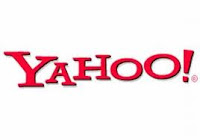The new Mac Book Pro is far too attractive to ignore; and with the reported 2x faster processors and 3x faster graphics-- it has become a great product. The graphics looks wonderful on it. Apple claims, "The integrated Intel HD Graphics 3000 processor — now included across the MacBook Pro lineup — handles the things you do every day. It encodes video quickly, making HD video calls with FaceTime possible. And it decodes efficiently, so you get long playback time for DVDs and iTunes movies".
 The company further added, "Imagine accessing multiple streams of uncompressed HD video — from your notebook — at speeds that let you edit an HD feature film in real time. That’s how Thunderbolt technology will connect the next generation of high-performance peripherals to the next generation of computers — starting with MacBook Pro. Ultrafast and ultraflexible, the Thunderbolt pipeline is more than 12 times faster than FireWire 800 and up to 20 times faster than USB 2.0, and it offers unprecedented expansion capabilities. It changes what you can do on a notebook." The product is also expected to provide really high battery life.
The company further added, "Imagine accessing multiple streams of uncompressed HD video — from your notebook — at speeds that let you edit an HD feature film in real time. That’s how Thunderbolt technology will connect the next generation of high-performance peripherals to the next generation of computers — starting with MacBook Pro. Ultrafast and ultraflexible, the Thunderbolt pipeline is more than 12 times faster than FireWire 800 and up to 20 times faster than USB 2.0, and it offers unprecedented expansion capabilities. It changes what you can do on a notebook." The product is also expected to provide really high battery life.














